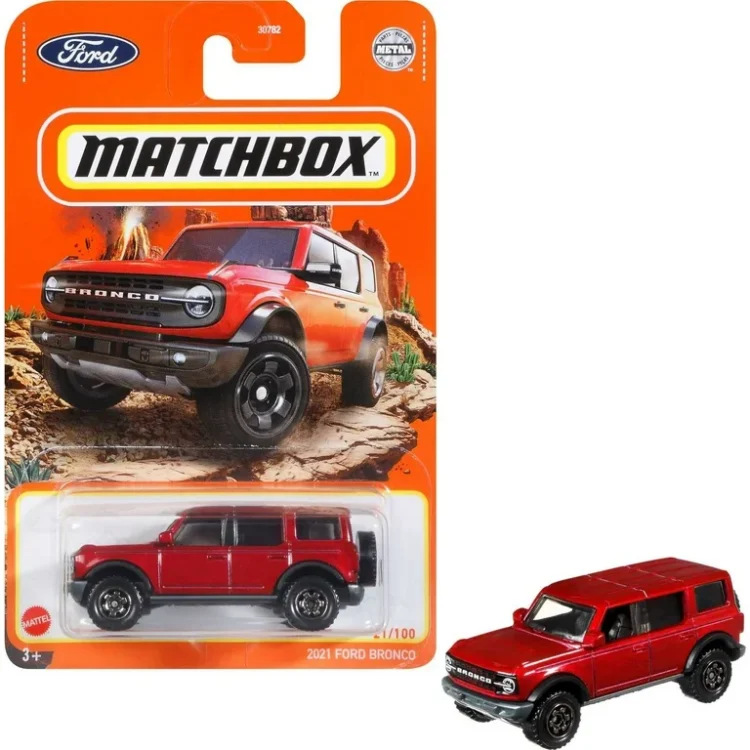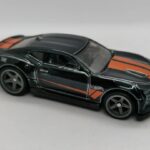Matchbox Cars: A Journey Through Miniature Automobiles
Introduction
Matchbox cars have been a beloved toy for generations, captivating children and collectors alike with their intricate designs and faithful reproductions of real-life vehicles. These small die-cast cars, known for their affordability and durability, have a rich history that reflects broader trends in the toy industry and car culture. This article delves into the origins, evolution, cultural impact, and enduring legacy of Matchbox cars, highlighting their significance in both the toy market and the world of collectibles.
Origins and Early History
Lesney Products and the Birth of Matchbox Cars
The story of Matchbox cars begins in the post-World War II era with the founding of Lesney Products. In 1947, two friends, Leslie Smith and Rodney Smith, established the company in a bombed-out pub in north London. Initially, Lesney Products produced small die-cast items like model trains and toys. The pivotal moment came in 1953 when Jack Odell, an engineer at Lesney, created a small toy car that could fit inside a matchbox, complying with a school rule that allowed only toys small enough to fit in a matchbox to be brought to class.
The first Matchbox car, the MG TD roadster, was an instant success. Odell’s innovative idea combined with the company’s manufacturing capabilities led to the rapid expansion of the Matchbox line. By 1954, Lesney had released a range of miniature vehicles under the brand name “Matchbox,” and the toys quickly gained popularity worldwide.
The Original 1-75 Series
The original Matchbox cars were part of a series known as the 1-75 series, consisting of 75 different models. These models included a variety of vehicles, from cars and trucks to buses and construction equipment. The meticulous attention to detail and high-quality craftsmanship set Matchbox cars apart from other toys on the market. Each vehicle was designed to be a faithful replica of its real-life counterpart, down to the smallest details like paint colors and logo placements.
Evolution and Expansion
1960s and 1970s: The Golden Era
The 1960s and 1970s are often regarded as the golden era of Matchbox cars. During this period, Lesney Products expanded its range to include a wider variety of vehicles and introduced several innovative features. The company also began to diversify its product line with the introduction of the King Size series, which featured larger models with more intricate details and moving parts.
One of the most significant developments during this time was the introduction of the Superfast range in 1969. In response to competition from Hot Wheels, which featured cars with low-friction wheels that could travel at high speeds on plastic tracks, Matchbox introduced its own line of high-speed vehicles. The Superfast cars featured thinner axles and new wheel designs, allowing them to compete with Hot Wheels in terms of speed and performance.
Matchbox vs. Hot Wheels: The Rivalry
The rivalry between Matchbox and Hot Wheels, which began in the late 1960s, had a profound impact on the toy car market. Hot Wheels, introduced by Mattel in 1968, quickly became known for their flashy designs, bright colors, and high-speed performance. In contrast, Matchbox cars were prized for their realism and attention to detail. This competition pushed both companies to innovate and expand their product lines, ultimately benefiting consumers with a wider variety of choices.
1980s and 1990s: Challenges and Changes
The 1980s and 1990s brought significant challenges and changes to the Matchbox brand. Economic pressures, changes in consumer preferences, and increased competition from other toy manufacturers forced Lesney Products to adapt. In 1982, Lesney declared bankruptcy, and the Matchbox brand was sold to Universal Toys, which later became part of the Tyco Toys conglomerate. During this period, production was moved to different countries, including China and Thailand, to reduce costs.
Despite these challenges, Matchbox continued to innovate and release new models. The brand introduced the Matchbox Collectibles line, aimed at adult collectors, and expanded its range to include playsets, action figures, and other toys. In 1997, Mattel, the parent company of Hot Wheels, acquired the Matchbox brand, bringing the two iconic toy car lines under one roof.
Cultural Impact and Legacy
Matchbox Cars in Popular Culture
Matchbox cars have left an indelible mark on popular culture. They have been featured in movies, television shows, and advertisements, often symbolizing childhood nostalgia and the joy of play. The tiny cars have also inspired songs, artwork, and literature, cementing their place in the cultural zeitgeist.
One notable example of Matchbox cars in popular culture is their appearance in the animated television series “Micro Machines,” which aired in the late 1980s and early 1990s. The show, inspired by a line of miniature vehicles similar to Matchbox cars, featured fast-paced action and adventure, capturing the imaginations of young viewers.
Collecting Matchbox Cars
Collecting Matchbox cars has become a popular hobby for enthusiasts of all ages. The appeal of collecting lies in the variety of models, the history behind each vehicle, and the thrill of finding rare and valuable pieces. Some collectors focus on specific themes, such as vintage models from the 1950s and 1960s, while others seek out limited edition releases or cars with unique features.
The value of Matchbox cars can vary widely depending on factors like age, condition, rarity, and demand. Early models from the original 1-75 series, especially those in mint condition with their original packaging, can fetch high prices at auctions and in collector markets. Special editions, promotional models, and cars with rare color variations are also highly sought after by collectors.
Preserving and Displaying Collections
For collectors, preserving and displaying Matchbox cars is an important aspect of the hobby. Proper care and storage can help maintain the condition and value of the vehicles. Many collectors use display cases, shelves, or custom-built dioramas to showcase their collections. Keeping cars in a dust-free environment, away from direct sunlight and humidity, can prevent damage and deterioration.
The Modern Era
Technological Advancements
In the modern era, Matchbox cars have continued to evolve with technological advancements. Today, 3D modeling and printing technology allow for even greater precision and detail in the design and production of the vehicles. This technology has enabled Matchbox to create more intricate and realistic models, appealing to both children and adult collectors.
In addition to improvements in manufacturing, Matchbox has embraced digital technology to enhance the play experience. Augmented reality (AR) and mobile apps have been integrated with Matchbox products, allowing children to interact with their cars in new and exciting ways. These digital enhancements add a layer of interactivity and engagement, bridging the gap between traditional play and modern technology.
Environmental Initiatives
As environmental awareness has grown, Matchbox has taken steps to address sustainability in its production processes. The company has committed to using more sustainable materials, such as recycled plastics and eco-friendly packaging. These initiatives reflect a broader trend in the toy industry towards reducing environmental impact and promoting sustainability.
In 2020, Matchbox announced a partnership with TerraCycle, a global leader in recycling hard-to-recycle materials. This partnership allows consumers to recycle their old Matchbox cars and other toys, reducing waste and promoting a circular economy. These efforts demonstrate Matchbox’s commitment to environmental responsibility and its role as a forward-thinking brand.
Educational and Developmental Benefits
Beyond their entertainment value, Matchbox cars offer educational and developmental benefits for children. Playing with these miniature vehicles helps develop fine motor skills, hand-eye coordination, and spatial awareness. Children learn about different types of vehicles, their functions, and the basics of physics through imaginative play.
Matchbox cars also encourage creativity and storytelling. Children often create elaborate scenarios and narratives involving their cars, which can enhance language skills and cognitive development. The open-ended nature of play with Matchbox cars allows children to explore their imagination and develop problem-solving skills.
Community and Events
The Matchbox community is vibrant and active, with numerous events and gatherings held worldwide. Collectors, enthusiasts, and fans come together at conventions, swap meets, and car shows to share their passion for Matchbox cars. These events provide opportunities for networking, trading, and showcasing collections, fostering a sense of camaraderie among participants.
Online forums, social media groups, and dedicated websites also play a significant role in connecting the Matchbox community. These platforms allow collectors to share information, discuss trends, and exchange tips on collecting and preserving Matchbox cars. The sense of community and shared enthusiasm is a testament to the enduring appeal of these miniature vehicles.
Conclusion
Matchbox cars have transcended their origins as simple toys to become iconic symbols of childhood, creativity, and innovation. From their humble beginnings in a small London workshop to their status as a global brand, Matchbox cars have captivated the imaginations of millions. Their evolution over the decades reflects broader trends in the toy industry, car culture, and society as a whole.
As Matchbox continues to adapt to changing times and embrace new technologies, the brand remains a beloved fixture in the world of toys and collectibles. The enduring legacy of Matchbox cars is a testament to their timeless appeal and the joy they bring to children and collectors around the world. Whether as a cherished childhood memory or a prized collectible, Matchbox cars hold a special place in the hearts of many, ensuring their continued relevance and popularity for generations to come.








